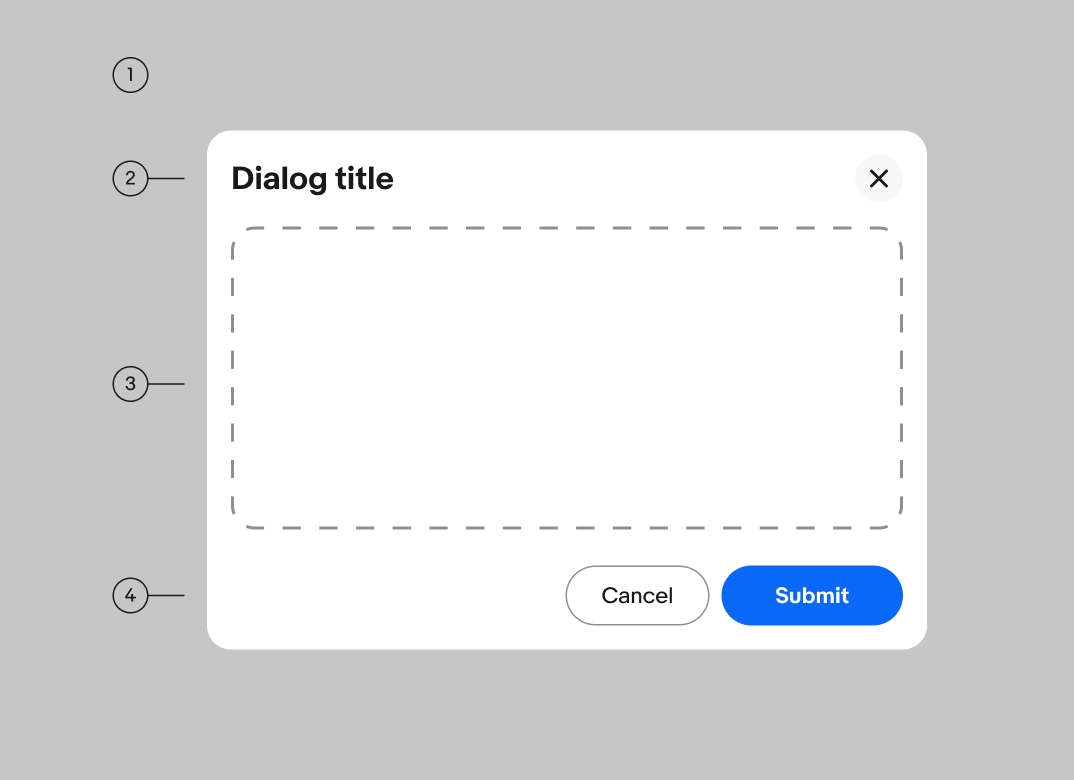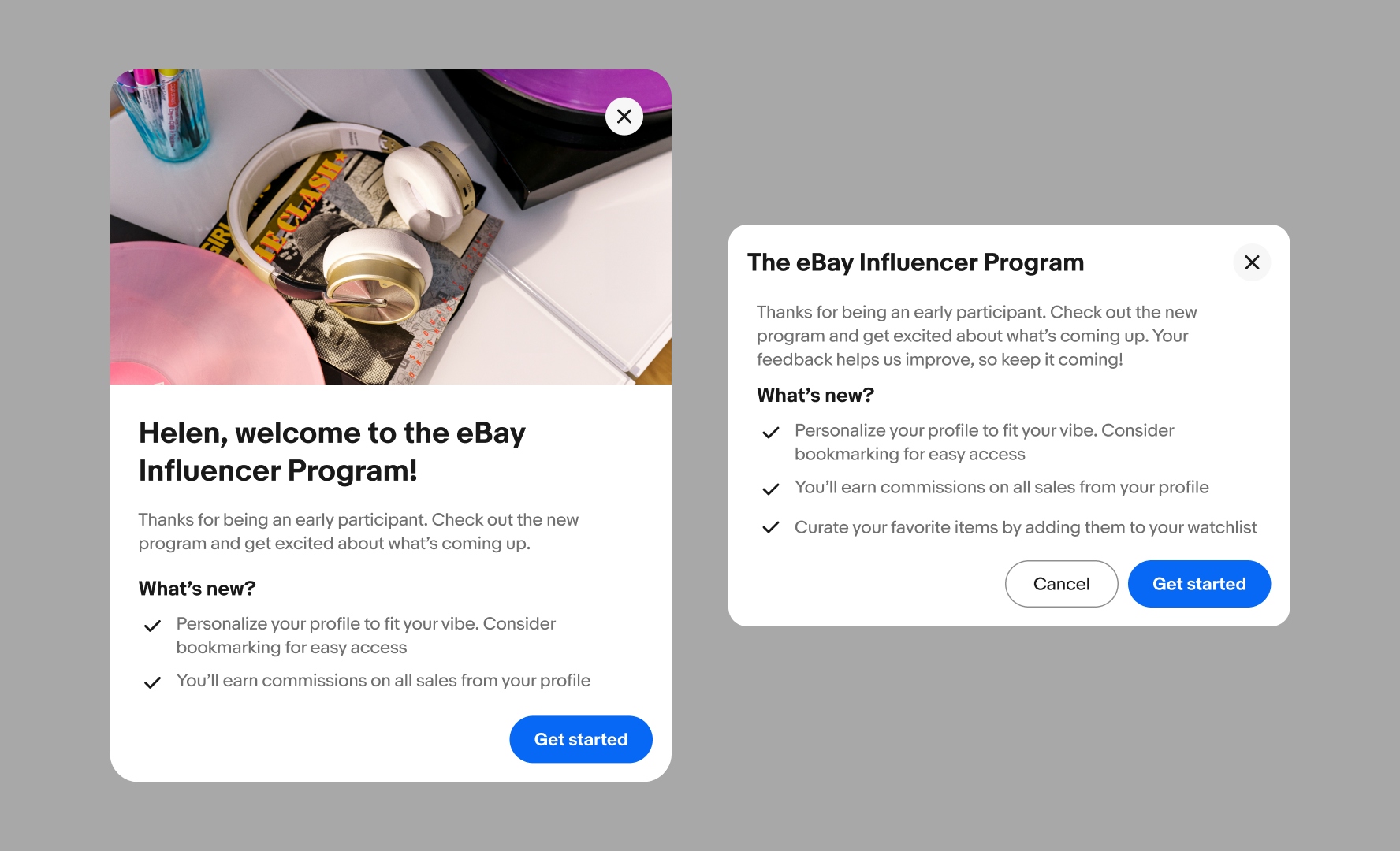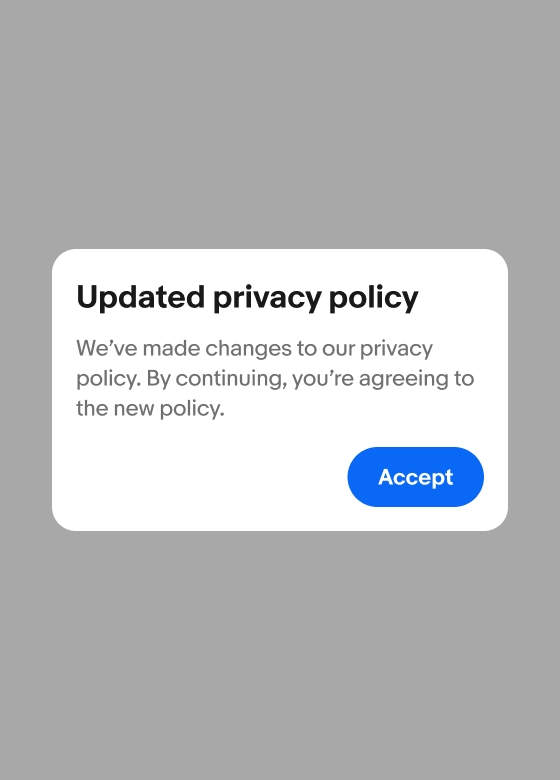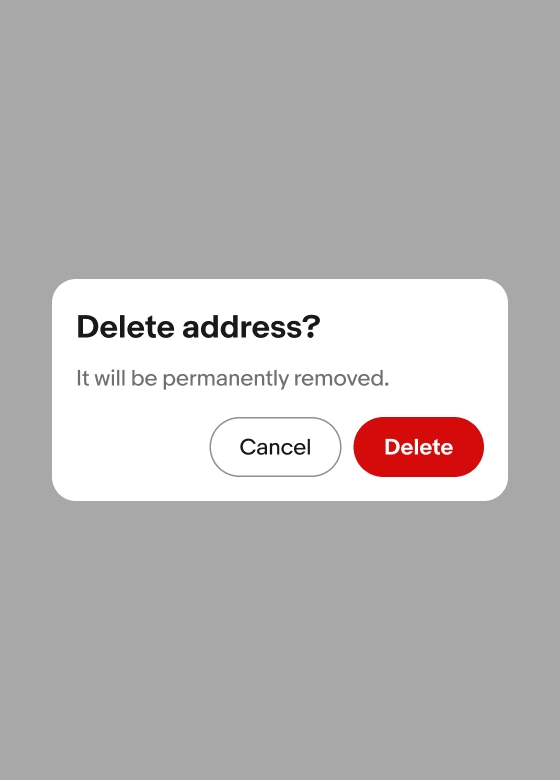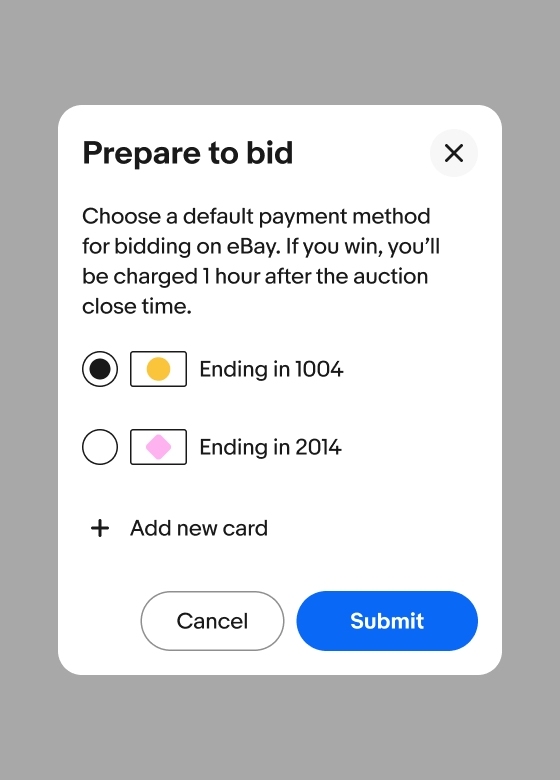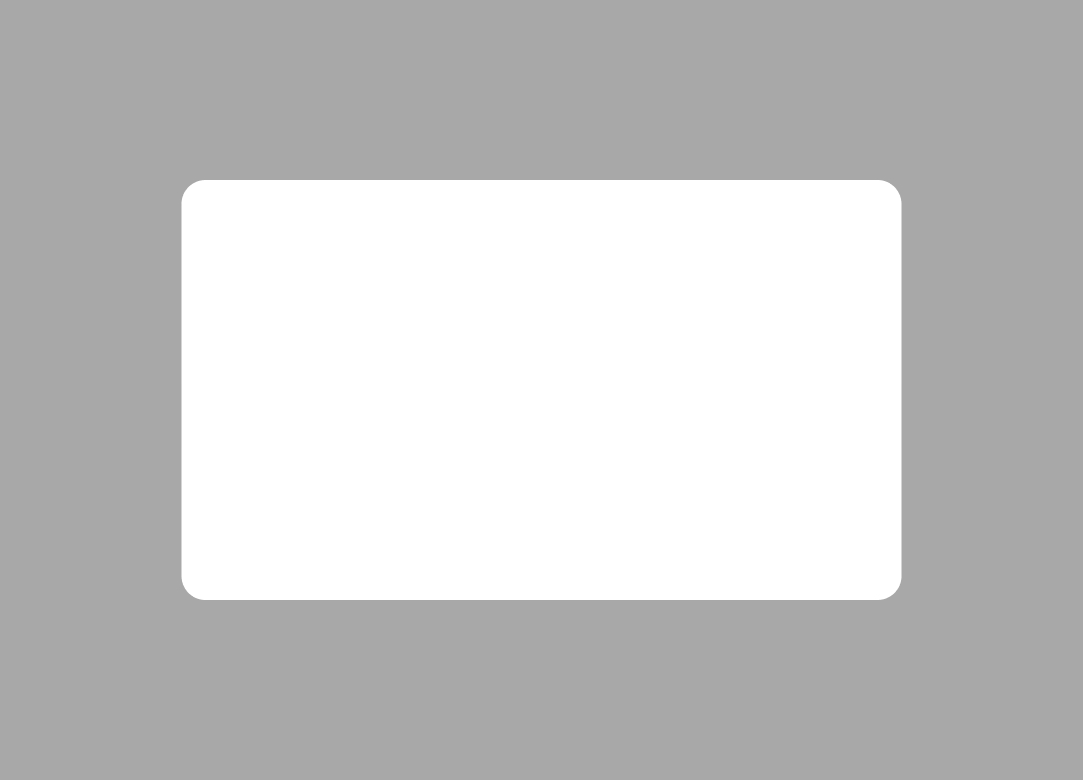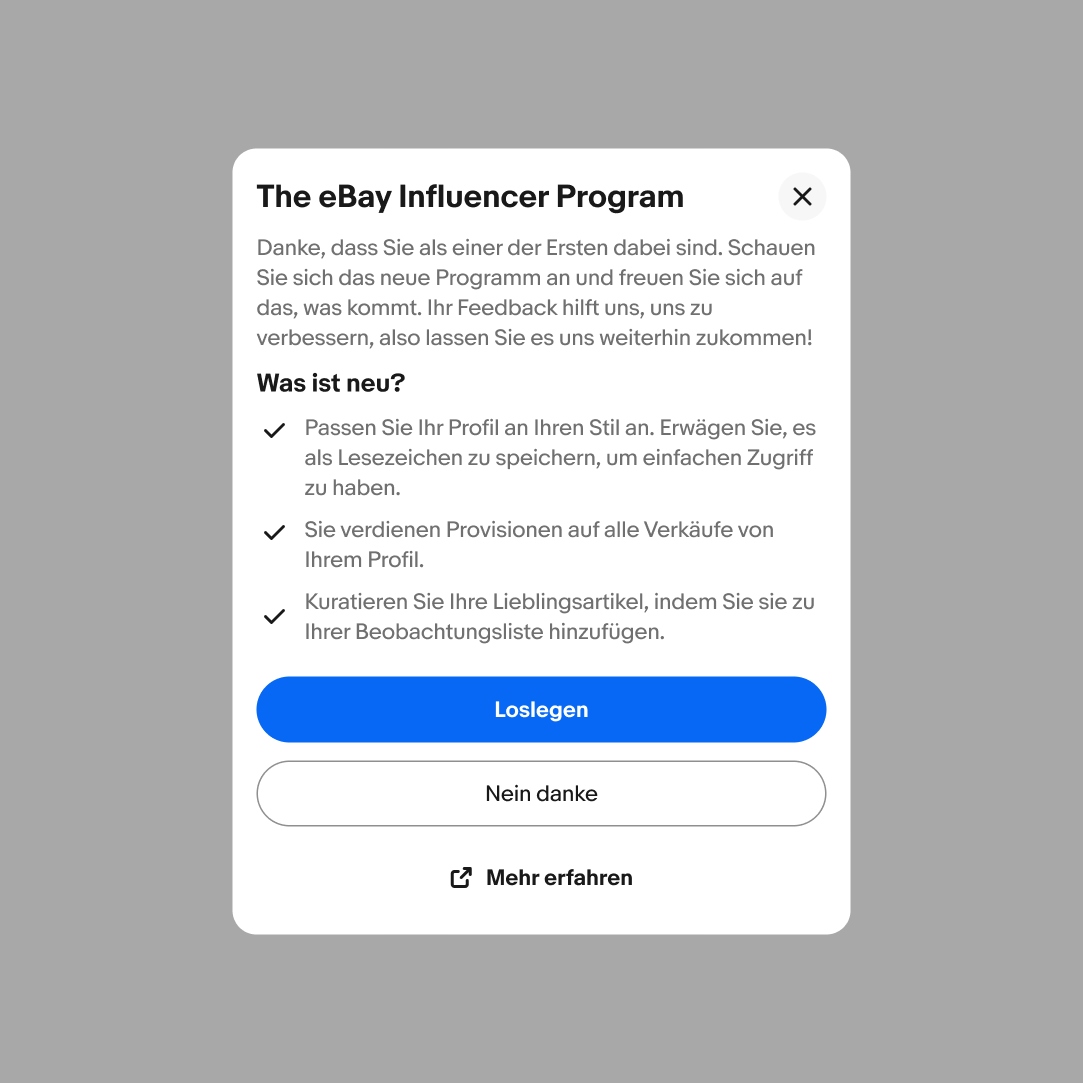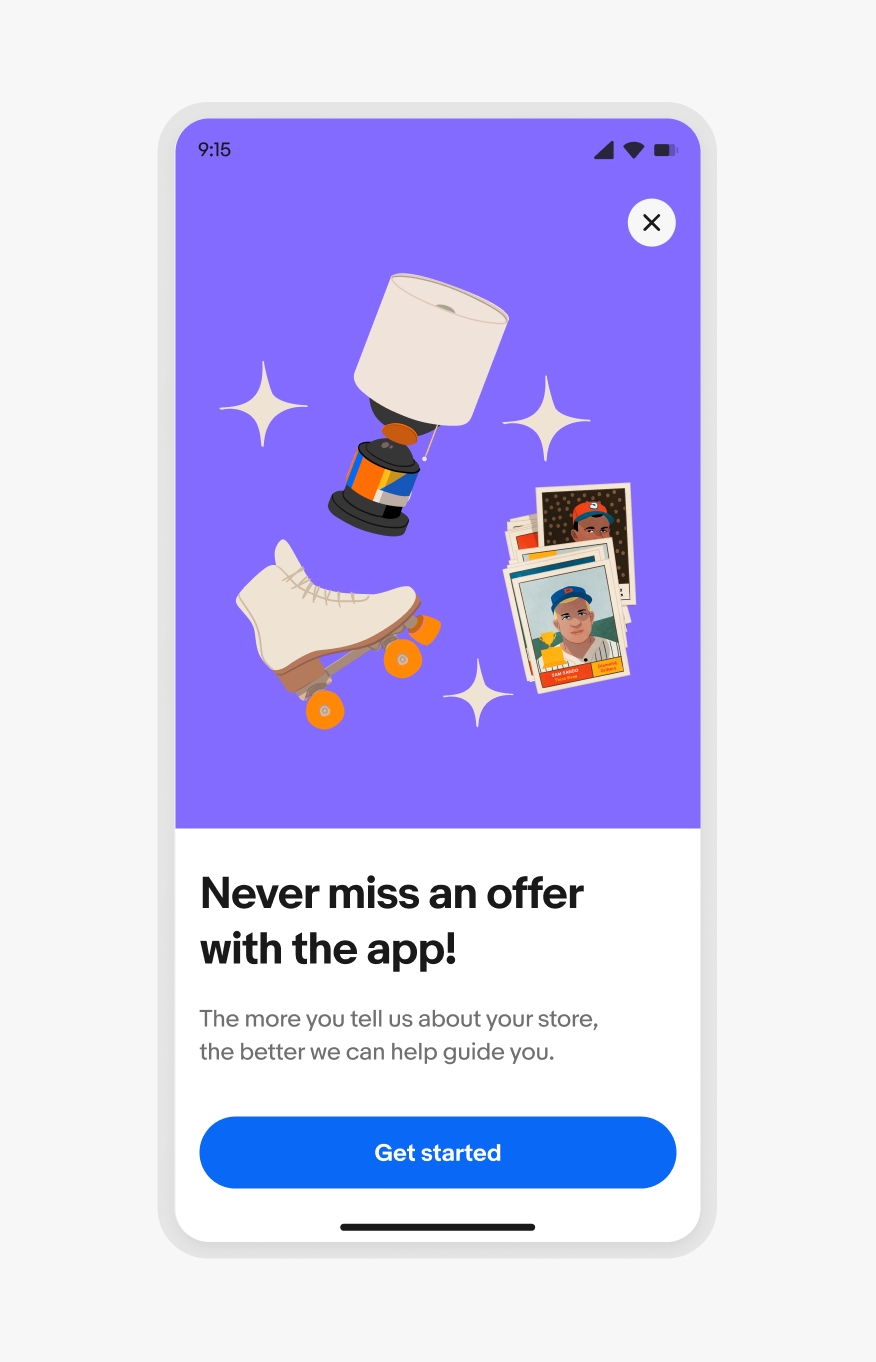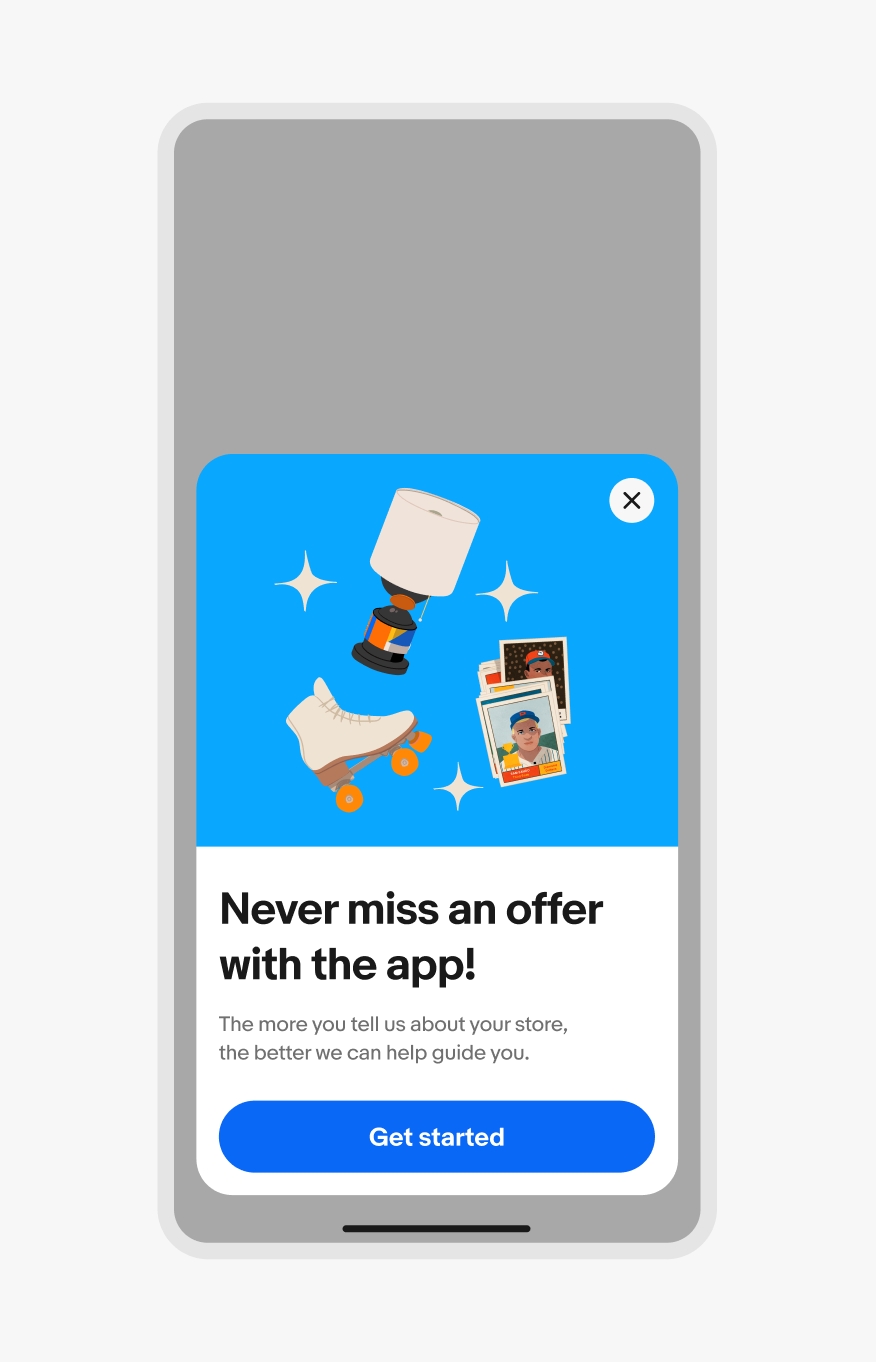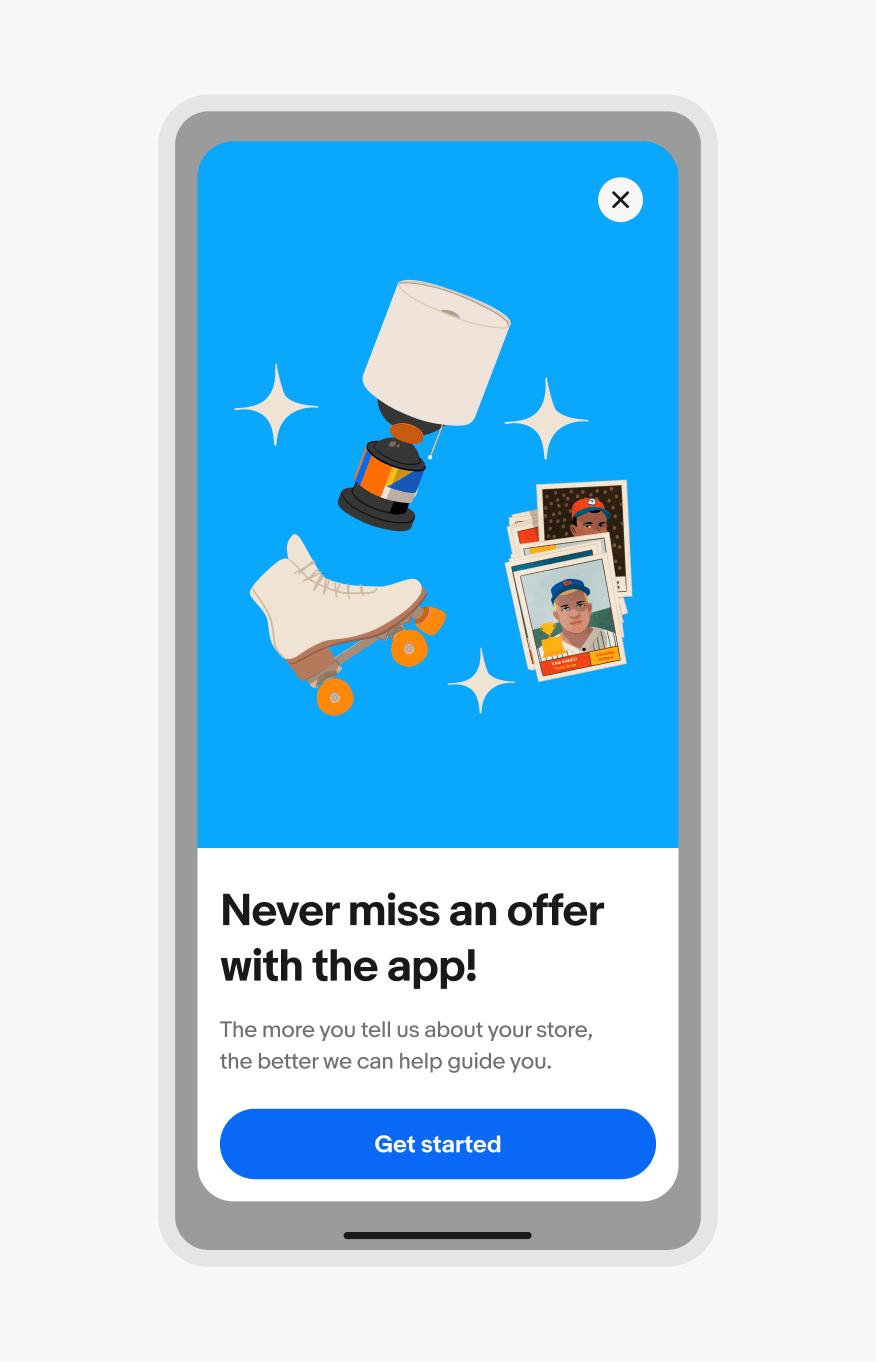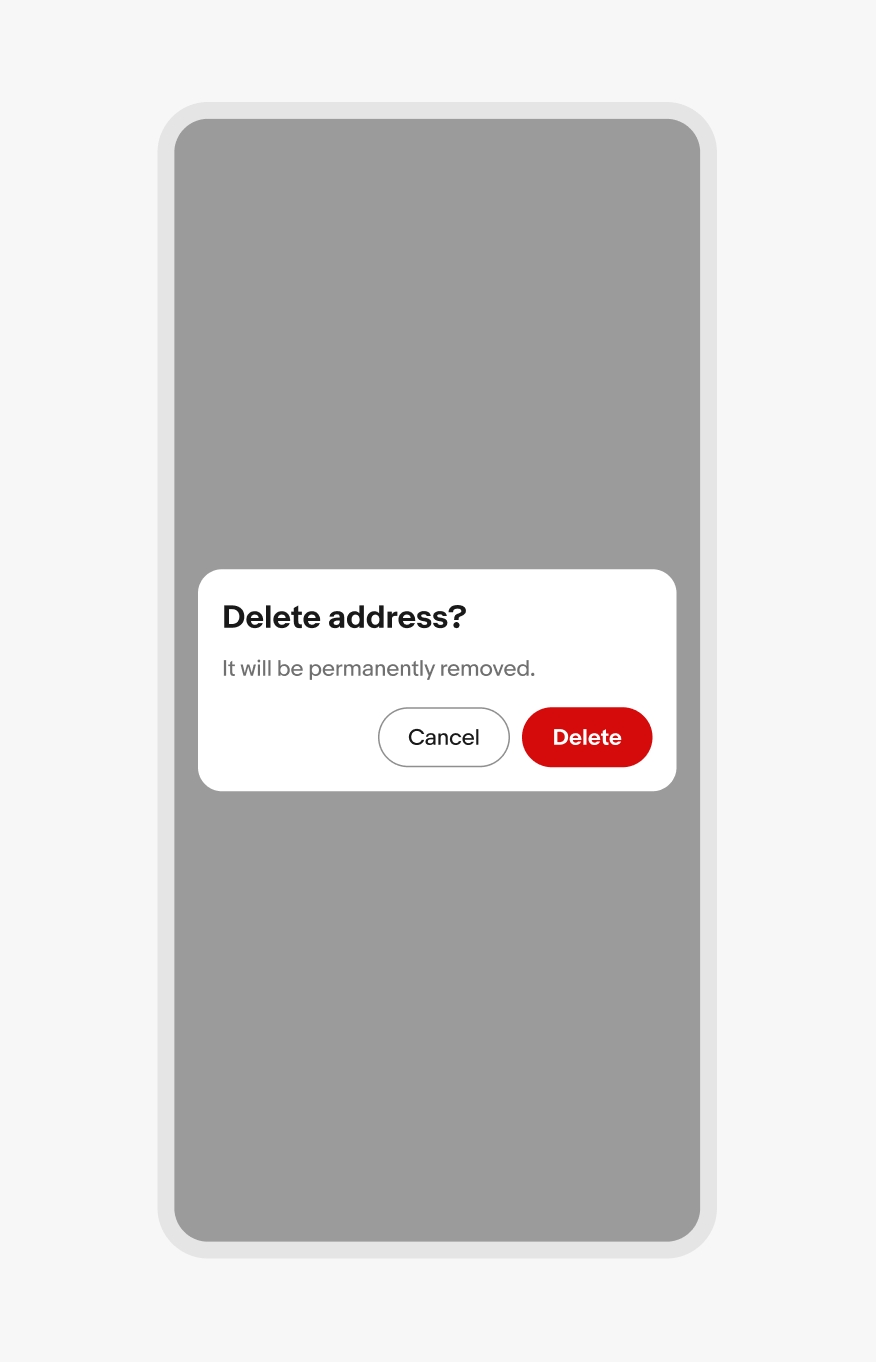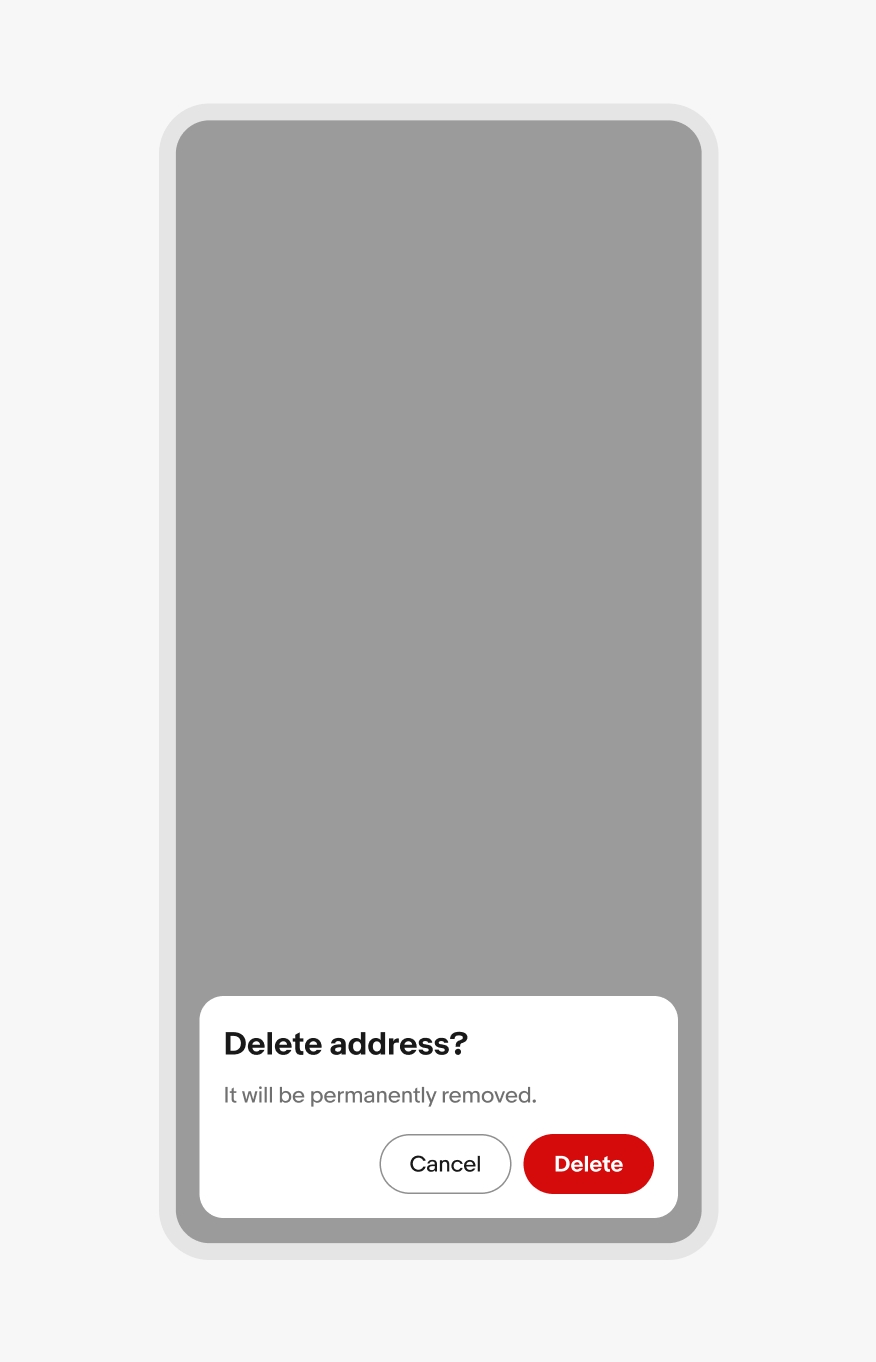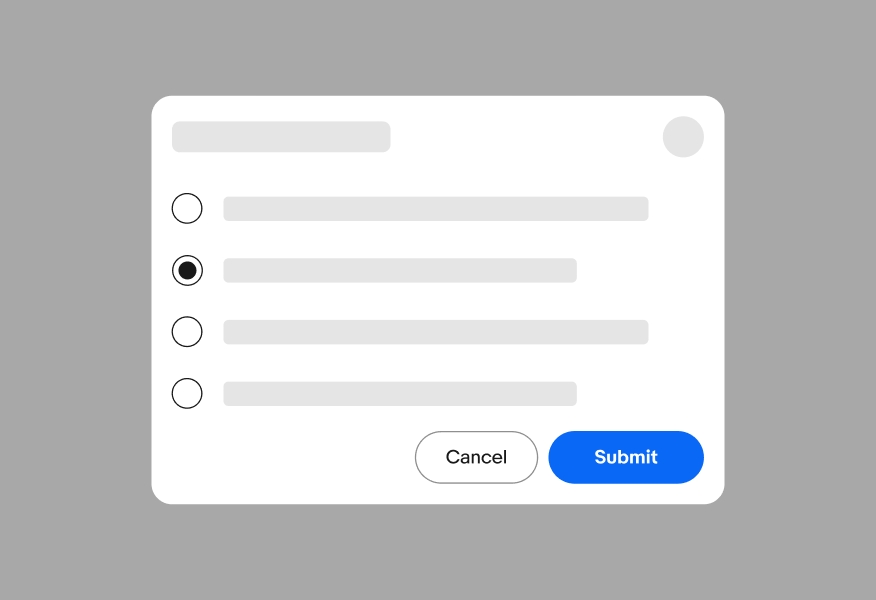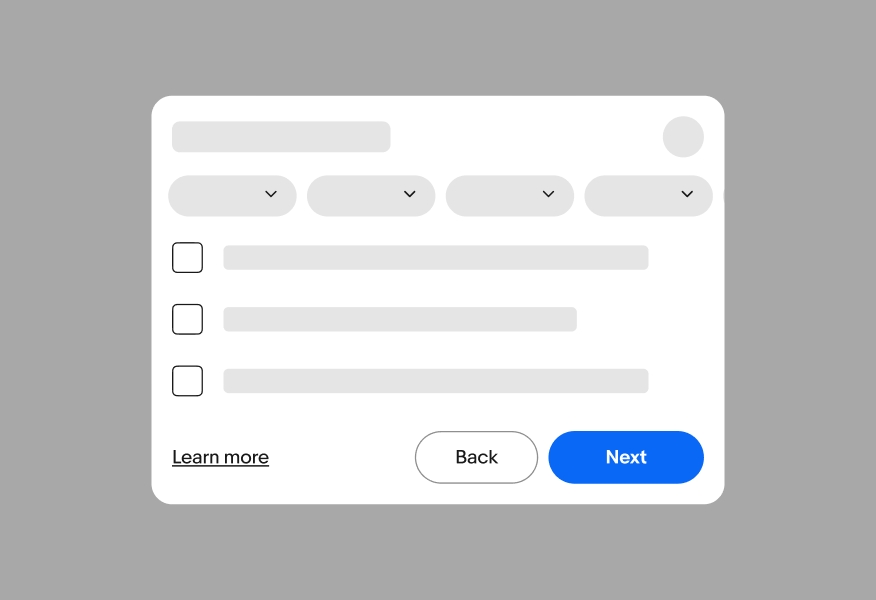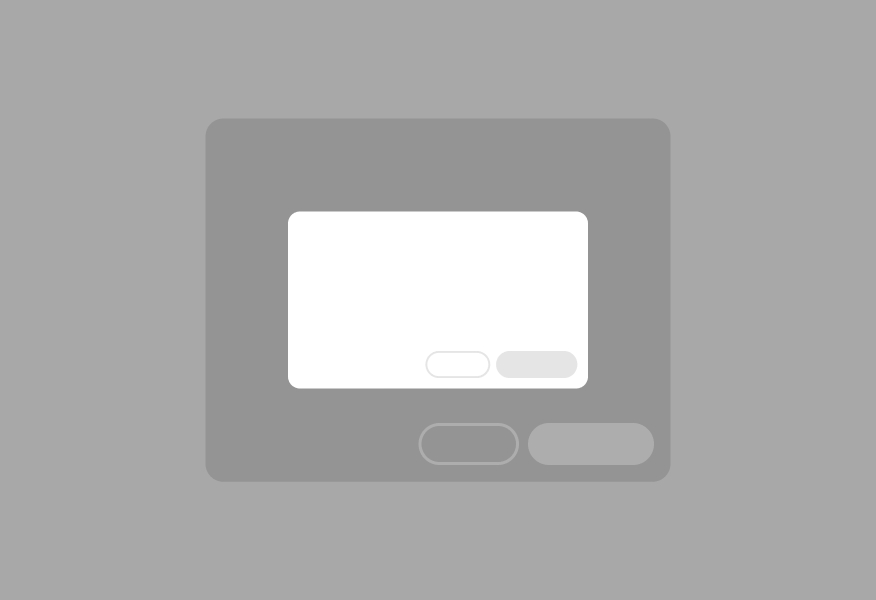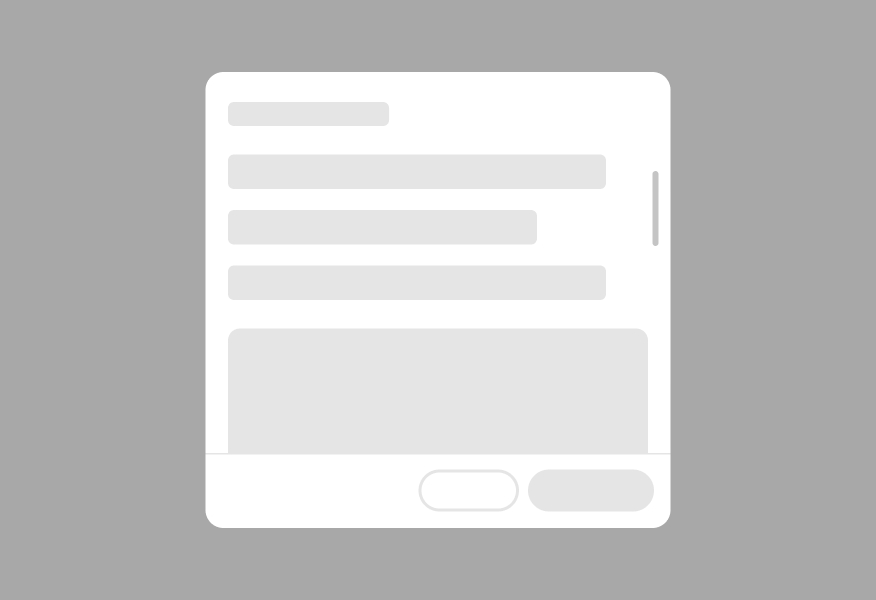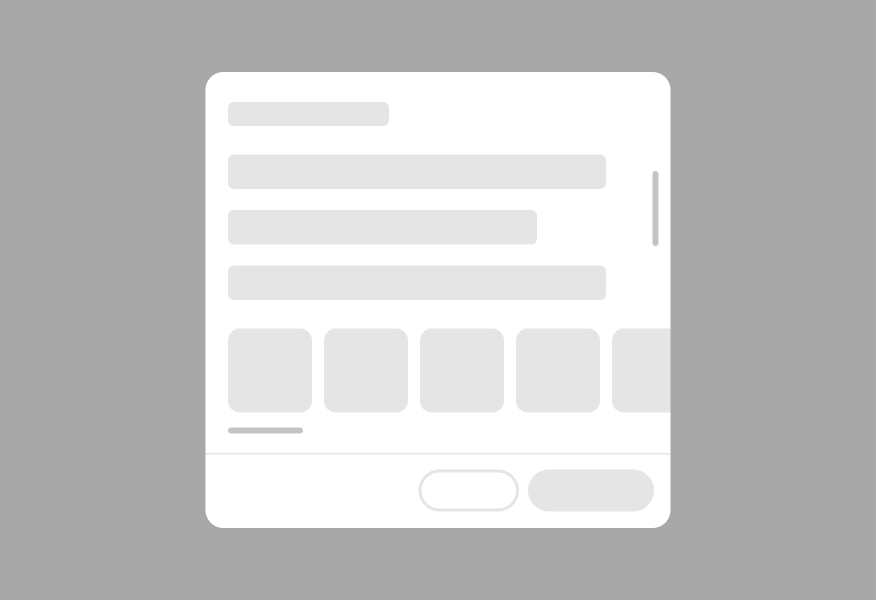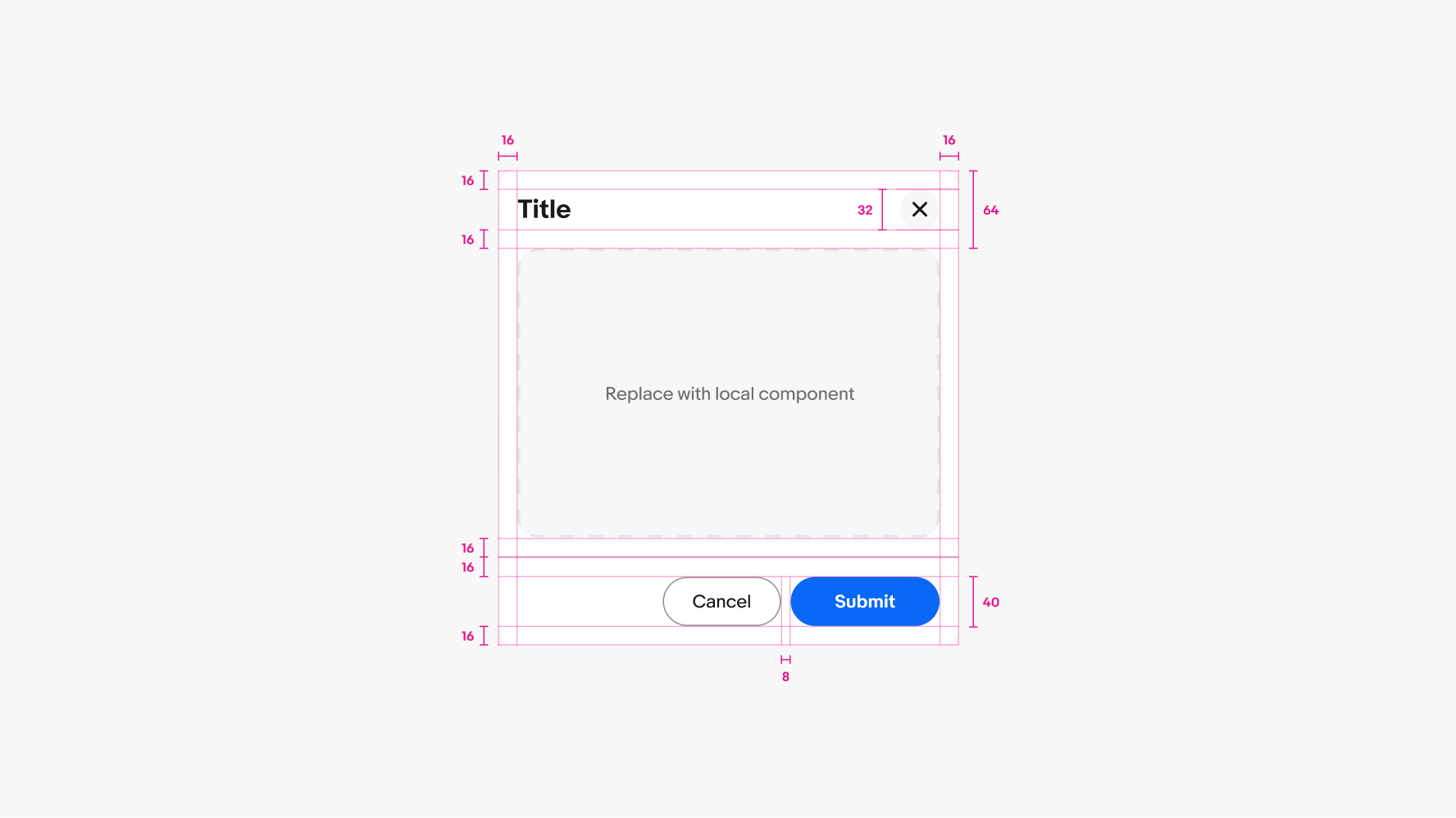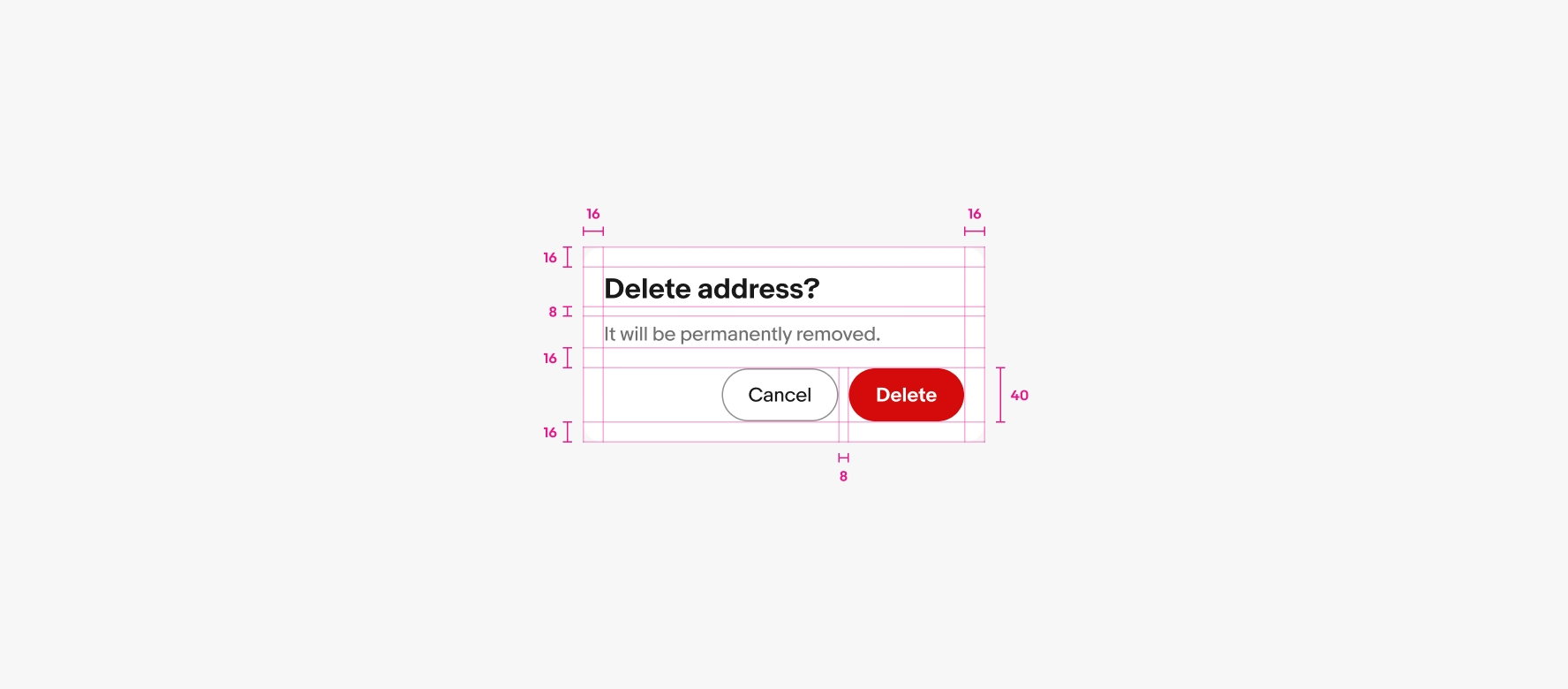Dialog
Dialogs appear in front of other content to ask for a decision or inform users of important information.
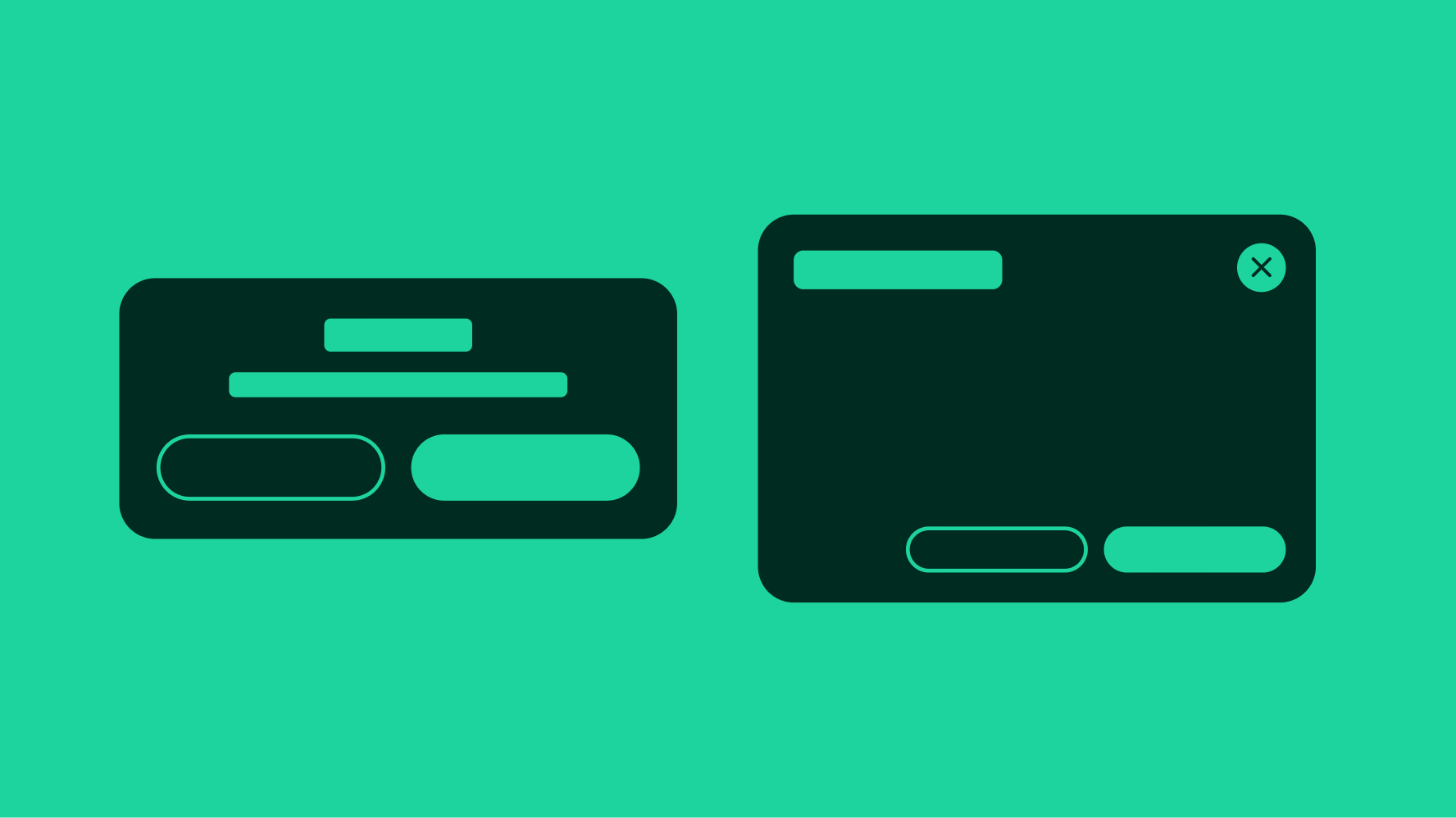
Focused
Dialogs focus the user on a single task or piece of critical information.
Responsive
Dialogs are initiated by the user either explicitly or implicitly. They are not system-generated.
Intentional
Dialog content is necessary and helpful for the user to complete a larger goal.
Small screen native
Native applications use the bottom sheet for dialogs.
Small screen web
Dialogs on web are inset and bottom-aligned.
Large screen
Dialogs are centered on larger screens across platforms. Dialogs can be offset to the left or right on large-format foldable devices.
